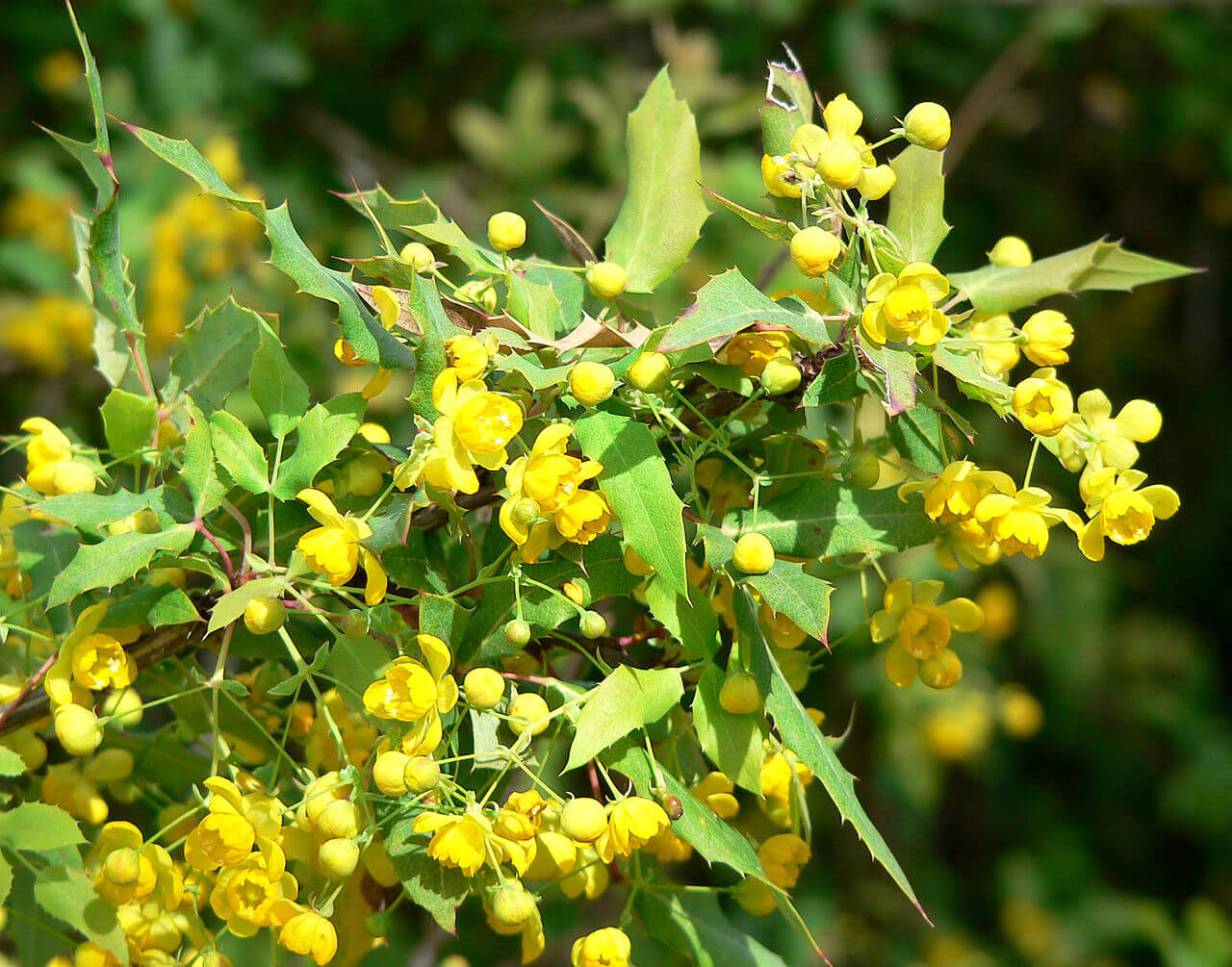This year my Nevin’s Barberry (Berberis nevinii) truly made that leap and ‘came into its own’! Lovely, fragrant yellow flowers smothered the plant in early spring, right about the same time as many Ceanothus start to bloom; and then abundant, small red berries followed, maturing in June.
Nevin’s Barberry is a rare endemic shrub, now extirpated from most of its rather restricted original range from Los Angeles south to San Diego; so it’s an especially good thing that the shrub is quite easy and adapatable to garden culture. It’s just that it is really slow at first, so the adage often quoted for California natives really applies here; the first year they sleep, the second year they creep, the third year they leap! With this plant it’s actually several years of ‘sleepiness’ but very much worth the wait!
In the garden it needs full sun and good drainage, and does best with regular, low water. It is totally deer-proof; the leaves are quite leathery, and equipped with sharp spines; this plant doesn’t even need protection from the deer when it’s first planted out!
By early summer the small red berries are attracting lots of birds, including the Ash-throated Flycatchers (Myiarchus cinerascens) ! They are often really shy, and somewhat secretive, but I had a great vantage point, watching them from inside the house. This is one of my favorite birds; I love their calls, and their general demeanor; and perhaps even more than that, I love the fact that they come here, to my garden, to breed! They over-winter in Baja California, flying north in spring; and for the last four or five years have been arriving at my place in Novato about the first week of May.
Having a nesting box of the right dimensions is one reason they’re here; but probably the biggest draw are the insect populations that thrive in my garden. I have never, and never will, use any insecticides; plants aren’t always as pretty and neat as they might be, but I really don’t care about that as much as I care about providing for life.
This year the adults didn’t just leave after fledging their young; they stuck around, and I credit the Barberry for keeping them here a few extra weeks. I often saw the adults with fledglings, perched in the shrub, and making these short ‘hawking style’ flights to pick off the barberries. Sometimes an adult would succumb to a fledgling’s begging and stuff a berry or two into an open mouth!
I was also, of course, picking off some of the berries to harvest the seeds. Seeds contained within a fleshy fruit are inhibited from growing until that flesh has been removed. To do this I first soak the fruits in water, and then smush the berries with my thumb. The heavier seed, now released, settles to the bottom, and the flesh, when stirred a bit, floats enough to carefully drain off most of it. To store the seed I dry them on a piece of waxed paper, from which they are easily removed (unlike a softer paper towel, to which dried seed will stick). The water that I soaked the fruits in smelled and tasted good; it had a natural mild sweetness and a pretty pinkish color. Given large enough quantities, I might just try making Barberry jam or jelly one year !
Seeds can be sowed after it freshly cleaned, which I did, last August; seeds took months to germinate outside, and now, a year later they are still just tiny seedlings; but patience is everything with this valuable habitat plant.


